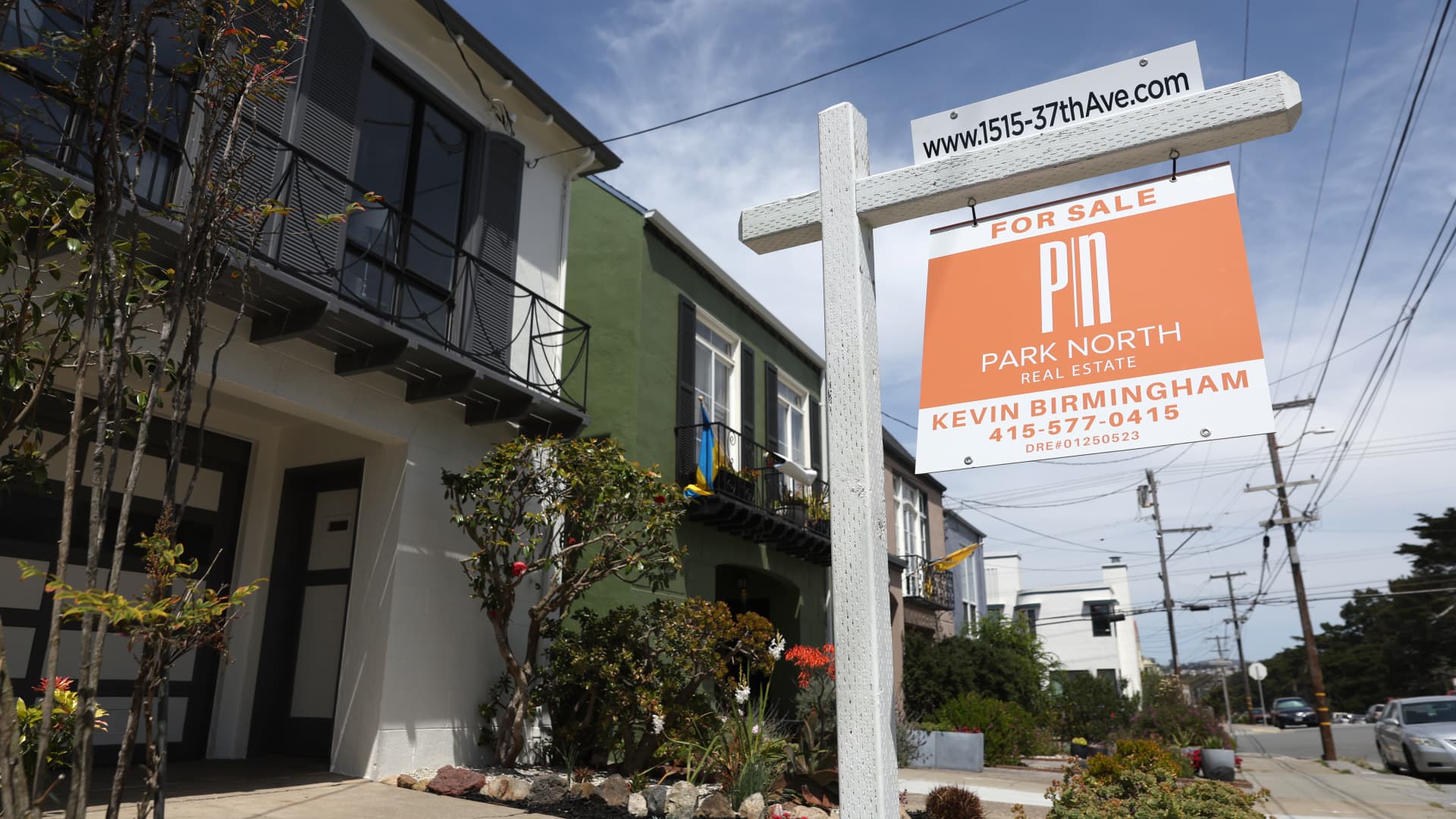Mortgage demand appears to have nowhere to go but down, as interest rates go up.
Application volume dropped 1.2% last week compared with the previous week, according to the Mortgage Bankers Association’s seasonally adjusted index. The week’s results include an adjustment for the observance of Labor Day. Since last year, homebuyers’ demand for mortgages has fallen by nearly a third.
related investing news
Mortgage rates, which had been easing slightly through July and August, pushed higher yet again, after Federal Reserve Chairman Jerome Powell made it clear to investors that the central bank would stay tough on inflation, even if it caused consumers some pain.
The average contract interest rate for 30-year fixed-rate mortgages with conforming loan balances ($647,200 or less) increased to 6.01% from 5.94%, with points decreasing to 0.76 from 0.79 (including the origination fee) for loans with a 20% down payment.
“The 30-year fixed mortgage rate hit the 6% mark for the first time since 2008 – rising to 6.01% – which is essentially double what it was a year ago,” said Joel Kan, MBA’s associate vice president of economic and industry forecasting.
Refinance demand fell another 4% for the week and was 83% lower than the same week one year ago. With rates above 6%, only about 452,000 borrowers could benefit from a refinance, according to Black Knight, a mortgage technology and data provider. That is the lowest number on record. These few remaining candidates could only save about $315 per month per borrower.
Mortgage applications to purchase a home squeezed out a gain of 0.2% from the previous week, but were 29% lower than the same week one year ago. There was a bump up in demand for Veterans Affairs and USDA loans, which are favored by first-time buyers because they can offer low or no down payments.
“The spread between the conforming 30-year fixed mortgage rate and both ARM and jumbo loans remained wide last week, at 118 and 45 basis points, respectively. The wide spread underscores the volatility in capital markets due to uncertainty about the Fed’s next policy moves,” Kan added.
Mortgage rates jumped significantly higher this week, after the monthly inflation number came in higher than expected. That had investors worried that the Federal Reserve would hike rates more than expected at its next meeting.
“It was one of the last shoes to drop before the Fed announcement on September 21st, and it arrived at a time where the market had fully priced in a 75bp hike, but was willing to consider something even higher if the data was convincing,” wrote Matthew Graham, chief operating officer of Mortgage News Daily. “This was arguably convincing enough for the Fed to at least open the conversation.”




